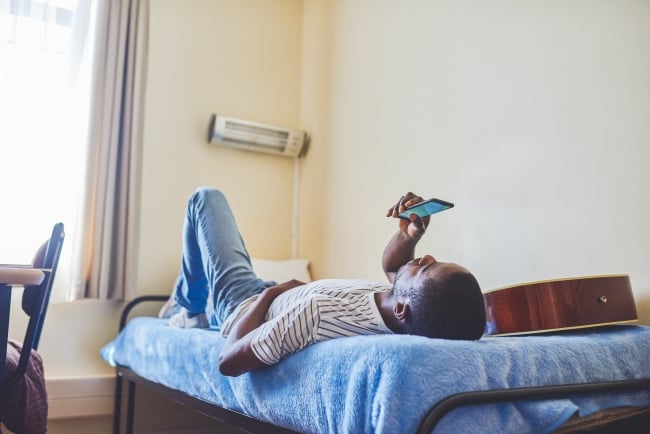You have /5 articles left.
Sign up for a free account or log in.

New research from ed tech group EdSights uses chatbot text messages to gauge student persistence throughout the academic year.
Moyo Studio/E+/Getty Images
Many institutions are looking at retroactive and current data, including student survey results, to gauge how students persist and retain. Tech group EdSights pulled from its data across 80 plus colleges and universities to see what students say are the biggest barriers to their academic success at college and how practitioners can respond.
In a Nov. 14 webinar, EdSights co-CEO Carolina Recchi and Will Miller, associate vice president for continuous improvement and institutional performance at Embry-Riddle Aeronautical University, discussed the data and insights gained from the company’s first report.
Methodology: For the analysis, EdSights collected data from 150,000 students across 89 institutions during the 2022–23 academic year, analyzing around 1 million text messages between August 2022 to August 2023.
Each participating institution sends weekly text check-ins to students using AI chatbots. The chatbot is themed after the college or university’s mascot to humanize the experience a bit, but students know they’re chatting with a bot.
Text message content varies by the point in the semester, but to benchmark student persistence, EdSights asks students how they’re feeling on a three-point scale (How are you feeling about this fall semester? Good/excited, Neutral, Nervous/Overwhelmed).
In the event a student shares that they need additional help or support from the institution, the chatbot refers the student to relevant information or offices.
The takeaways: EdSights shared some key takeaways from student data for higher education practitioners and leaders:
- Start check-ins early. Even during the first week, students reported feeling nervous and overwhelmed, so colleges and universities should pay closer attention to their learners. Even among learners who were excited at the start of the fall semester, 35 percent were no longer excited at the start of the spring semester and 14 percent were nervous or overwhelmed.
- Boost confidence and connections. Students with low self-efficacy or those who experience homesickness are less likely to persist, compared to their peers. Only 73 percent of students with low self-efficacy in the fall told the chatbot they planned to return in the spring. Campuses should create an environment where students feel represented and welcomed. First-generation and underrepresented minority students are more likely to struggle when it comes to perceived support system, as well.
- Make curricula relevant. When asked about academics, Black or African American students and first-generation students were less likely to say content was engaging to them. Students enrolled at community colleges, however, had the greatest number of students who said they enjoyed their courses.
- Support basic needs. Balancing work and school is the greatest stressor for students managing their finances, so colleges should create additional supports for working students. All institutions, including privates, had a significant population of students who reported basic needs insecurity as well, something that surprised EdSights staff.
- Invest in student wellness. Two-thirds of students said they struggle with wellness, which increases during the second semester of the academic year. Female students were more likely to say their wellness was poor, but many learners overall say their mental health is poor.
EdSights will publish the report in its entirety in January 2024.




